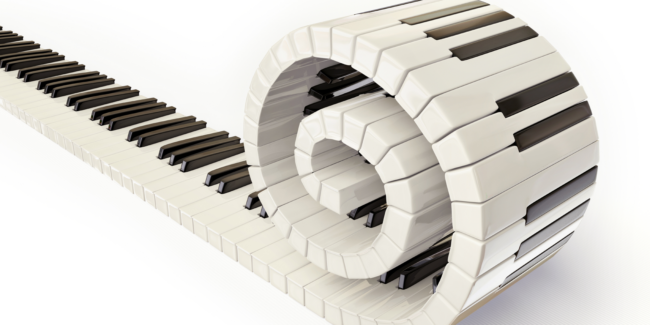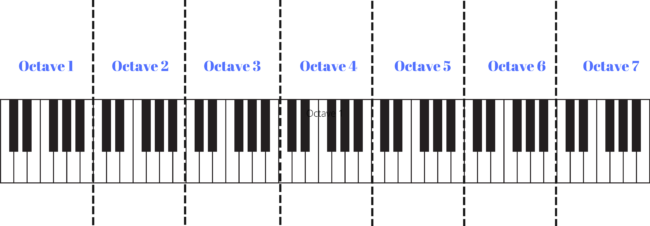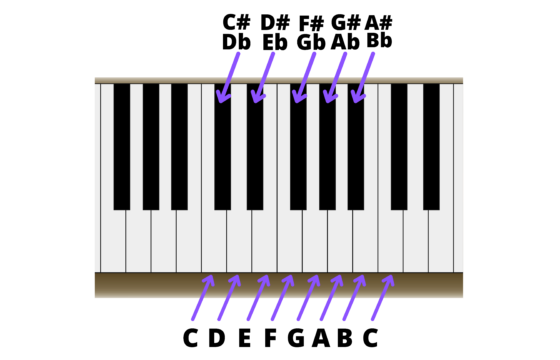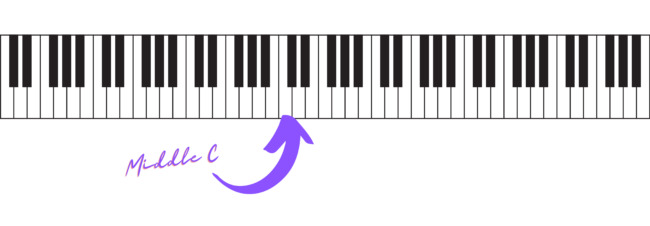Piano Keys Charts for Beginners

The piano is a beautiful instrument. Alternating black and white piano keys give the piano a distinct appearance.
However, the piano keys serve a greater purpose than mere aesthetics. At first glance, the keys may look like they’re random. However, the placement is strategic and creates a smooth playing experience.
Knowing about a keyboard’s various keys and layout enables you to optimize your hand placement, making learning and playing the piano more seamless. Just as a map of the ocean aids a seafarer, piano key charts are an essential tool for navigating your piano.
So let’s look at piano key charts for beginners — everything you need to orient yourself on your keyboard.
How many keys are on a piano?
The first piano had 54 keys. However, with time, innovation, and increasing demand for expansion from musicians, instrument-makers continued to add more keys. A traditional piano comes with 88 keys. However, modern pianos and keyboards are also available in 76-key, 61-key, and 49-key formats.
The 88 keys form a total of seven octaves plus a minor third, and each octave consists of seven notes represented by the first seven letters of the alphabet.

For every seven keys or notes, there are five black keys. There is a sequential pattern of two black keys between the first three white keys, followed by three black keys between the next four white keys. This pattern repeats consistently along with the keyboard.
While the claviature layout has an elegant aesthetic, the pattern brings order to the keyboard.
Duotone piano keys.
The colored keys enable you to distinguish the natural pitches from the semitone pitches easily and help musicians orient themselves on the keyboard.
The stripes of the keyboard also make it possible to identify each note and, therefore, which key to play. You can learn more about it in Piano Music Notes for Beginners.
White Keys
You can think of the white keys as a sort of base layer. On an 88-key piano, 52 of them are white.
They produce the seven natural notes (C-D-E-F-G-A-B).
In a given octave, there are seven white keys.

Black Keys
The remaining 36 black keys appear in a pattern that separates the white notes from each other, and they refer to the half-step intervals (semitones) between natural pitches.
Similarly, we organize the black keys alphabetically. However, each key denotes a sharp or flat variation of the notes that they border. For instance, the first black key of a will is both a C sharp and a D flat because it is between the notes C and D.
How to identify the different piano keys?
Knowing how to identify the keys is essential for any pianist. This can be confusing at first, but remember which key represents which note, and their position on the keyboard enables you to strike the keys more efficiently and confidently.
Every octave contains seven notes and twelve keys. Beginning with the letter C, we follow the alphabet from D-E-F-G-A-B and back to C.
So, each C is eight notes or one octave apart. If you can locate C, finding the other notes will be easier.
Most importantly, you want to know how to locate your middle C. That’s because the center-most C divides the treble clef and the bass clef, which makes reading sheet music much clearer.

Accidentals and harmonics.
Earlier, we talked about the distinctions between the white and black keys. Black keys produce semitones known as flat (b) and sharp notes (#).
Each black key divides two white keys and produces semitones. So each black key is either a flat or sharp note. A sharp semitone is a half step above a given note, whereas a flat semitone is a half step below. For example, the black key between C and D is either a C sharp or a D flat.
Scales and keys.
Scales and keys refer to a grouping of notes. Say you’re playing in the key of C, then you’re playing a C scale, or playing notes that revolve around that note.
The musical alphabet works in a circular fashion, so the key or scale acts as the foundation of the chords or melody. Thus, the base note acts as the grounding note. While playing other notes, they give you the impression that you’re moving, but the journey returns to the original key.
Main takeaways.
Understanding the layout of your keyboard is essential when it comes to playing the piano. It makes playing your instrument more natural by optimizing your hand placement, and it enables you to press your keys with greater confidence and speed. It allows you to focus your attention on other things, such as reading sheet music, listening to the notes, and using your pedals.
Taking the time to get to know your keyboard will dramatically increase your learning speed. However, piano keys charts aren’t the only tool for beginner pianists. If you’re looking to streamline your piano lessons, check out the Simply Piano app!









